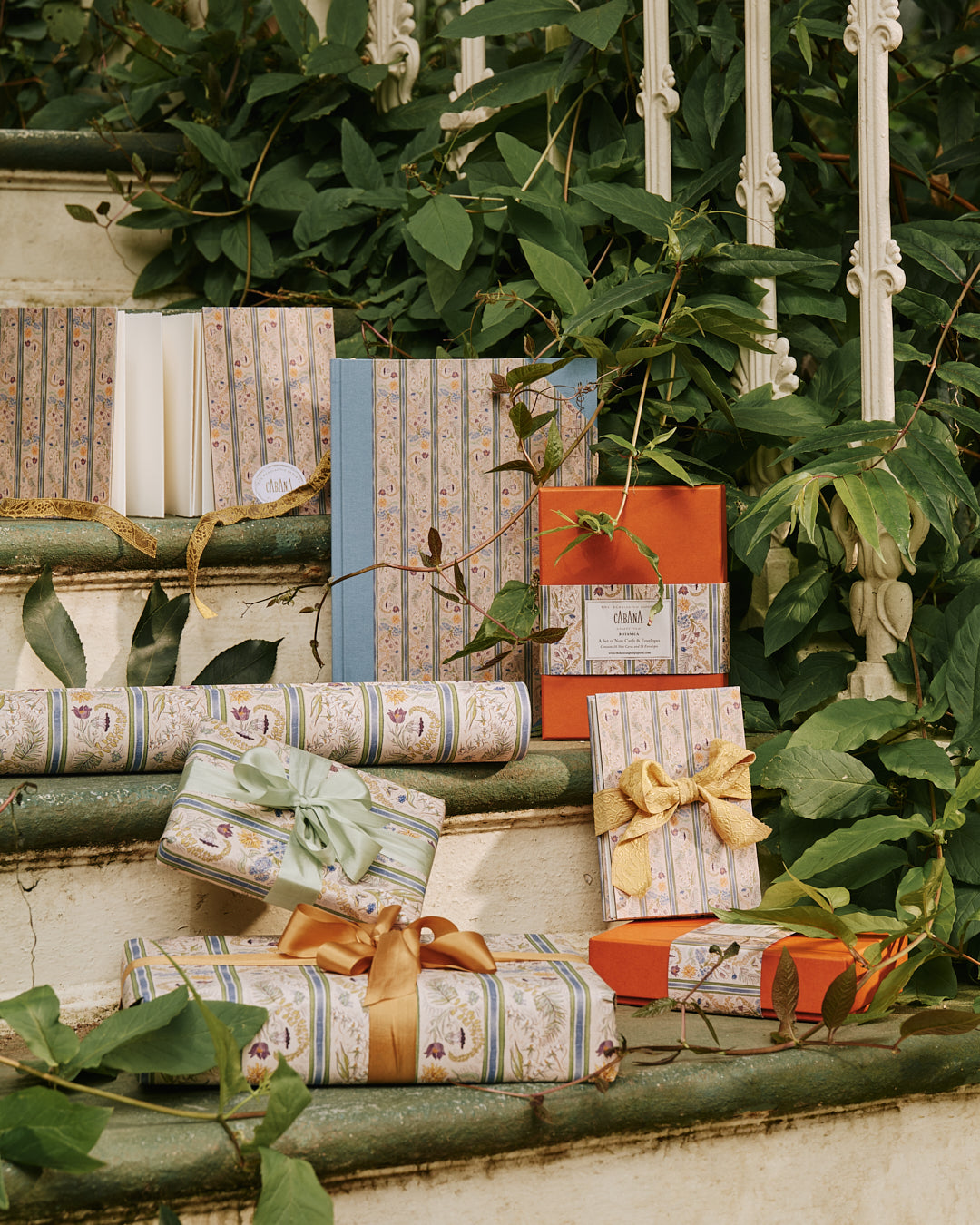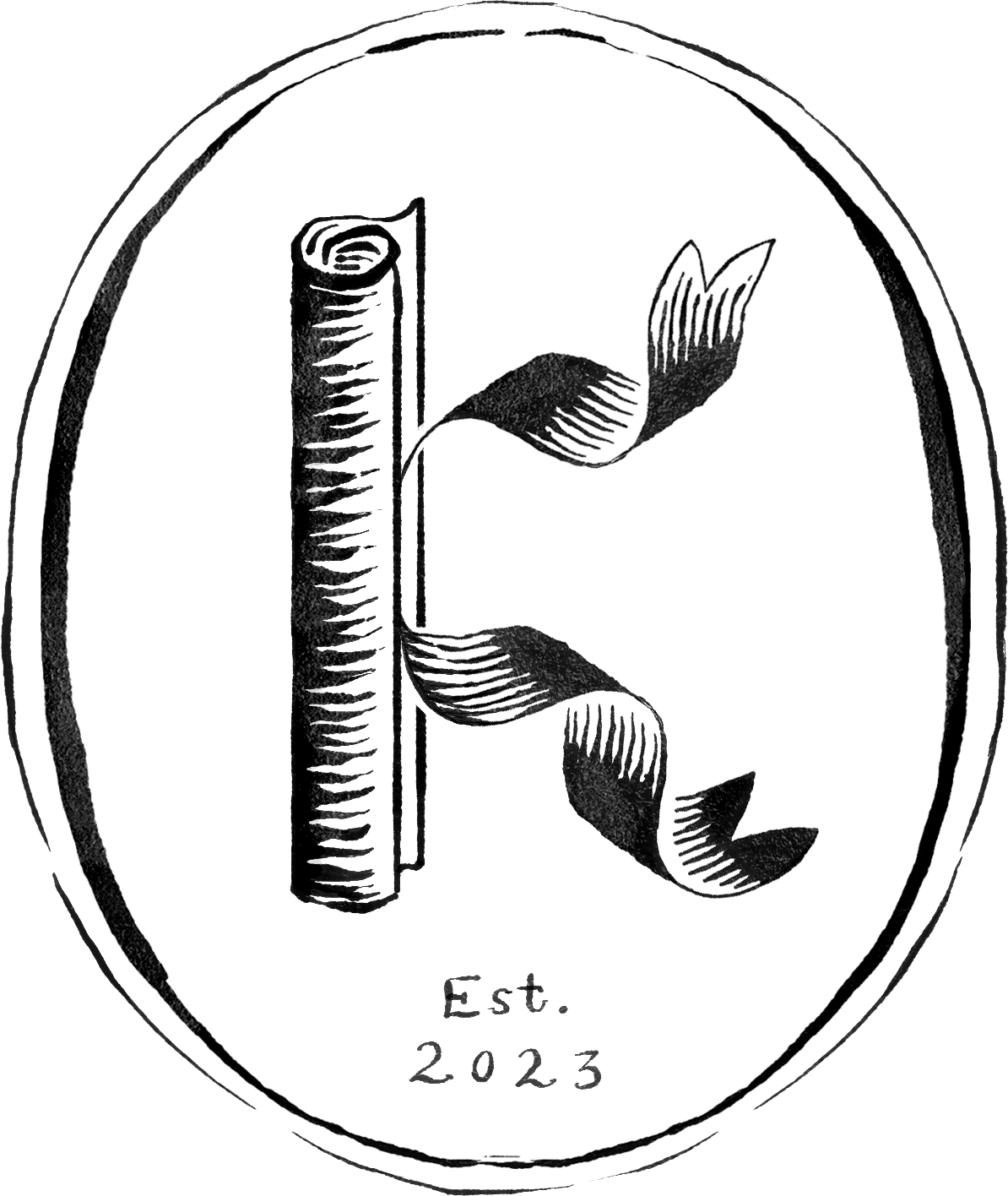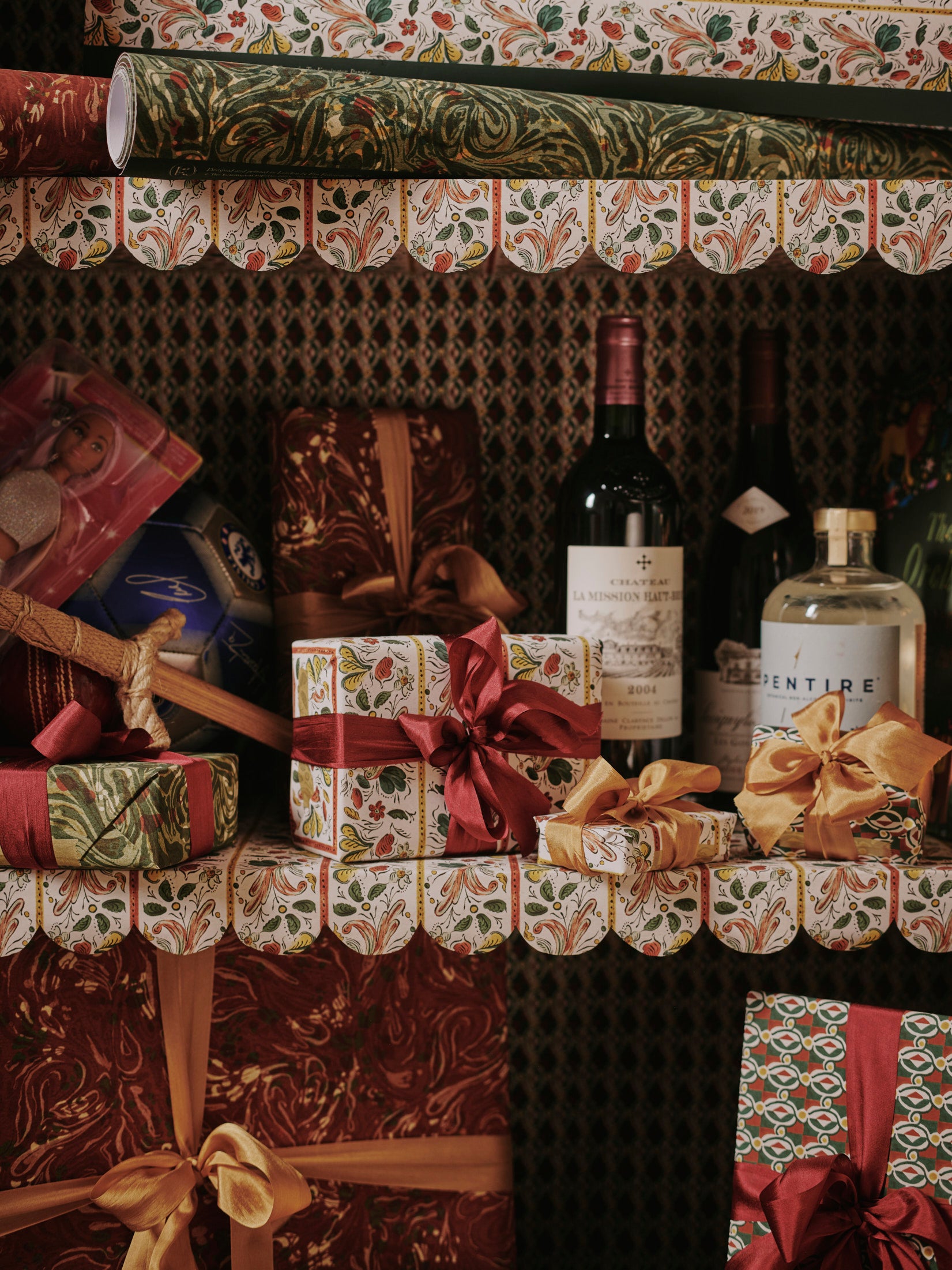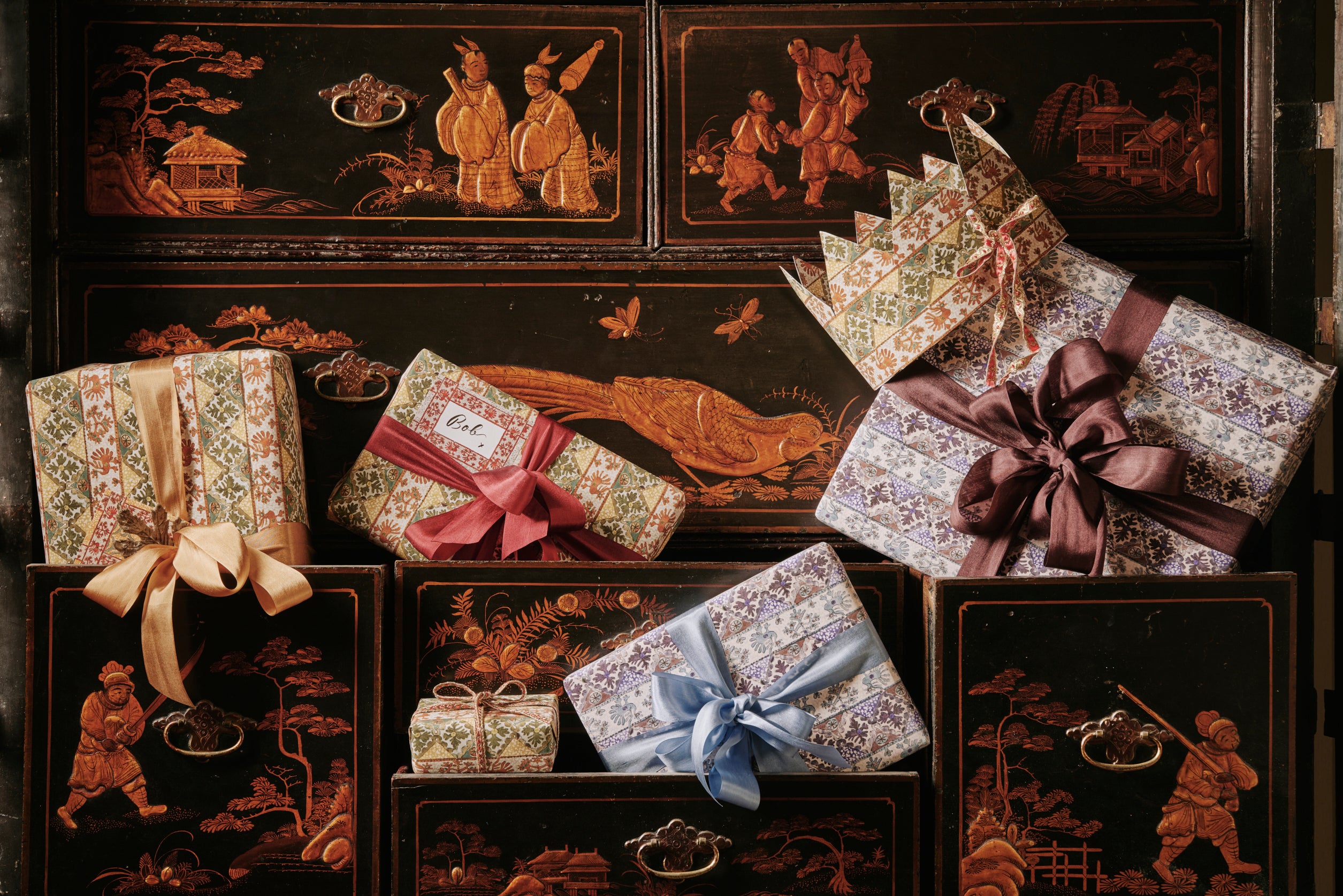
The Kensington Paperie x Cabana: The Botanica Collection
Created by Fin Fellowes for The Kensington Paperie, the Cabana Botanica print is a tribute to the inspiring conservation work undertaken by the team at Royal Botanical Gardens, Kew, and beyond. Each specimen in this print is to be found on the IUCN Critically Endangered List.

Pasque Flower
The velvety Pasque Flower (Pulsatilla vulgaris), records of which stem back to Roman times, is now endangered in the UK due to the destruction and degradation of their chalk grassland habitat. In the UK, notable populations of the Pasque Flower are associated with ancient Roman and Viking archaeological sites, which gave birth to the legend that these delicate flowers sprung from the spilt blood of Viking warriors.
Sea Marigold
Found only in the Trapani region of Sicily, and the scattered islets of nearby Formica and Favignana, the Sea Marigold (Calendula suffruticosa subsp. Maritima) has a total wild territory of just ten square kilometres, mainly due to coastal development.
Chilean Wine Palm
Harvesting the Chilean Wine Palm (Jubaea chilensis) is a deeply destructive process: the palms are decapitated, and with no capacity to regenerate its growing tip, this is the plant’s final act. The wild population has therefore been swiftly reduced and fragmented, leading to an IUCN Red List rating. The first Chilean Wine Palm at Kew was raised from seed in 1846 and planted in the nurturing environment of The Temperate House.
Barn Fern
The Barn Fern (Asplenium haughtonii) is native to St. Helena in the South Atlantic Ocean. The island is exceptionally isolated, more than 1,200 miles from the nearest landmass, emerging from the ocean along the Mid-Atlantic Ridge. In 2012, an emergency extension area to a runway of St Helena airport caused massive destruction of the Barn Fern’s habitat. The Tropical Nursery Team at Kew is working with many species endemic to St. Helena to support conservation work on the island.
Chatham Island Forget-Me-Not
The Chatham Islands are an archipelago in the Pacific Ocean about 800 km (430 nmi) east of New Zealand's South Island. The Chatham Island Forget-Me-Not (Myosotidium hortensia) is under threat from farming, cattle, weed encroachment and coastal development. These beautiful blue and white flowers with glossy green leaves are known in Maori as kopakopa.
Chassalia Northiana
Painted by eminent Victorian artist Marianne North in 1876, but only officially named in 2021, Chassalia Northiana is a blue-fruited shrub found in the rainforest of Borneo. Today, the painting is preserved among 800 others in the Marianne North Gallery in the heart of Royal Botanic Gardens, Kew. Incredibly, despite being identified by North on a trip to Borneo in 1876, the first herbarium specimen (which is needed to characterise the species) of this plant was not collected until 1973, nearly 100 years later.
Snake’s Head Lily
Easily available as a spring bulb in our gardens, Snake’s Head Lily (Fritillaria meleagris) is sadly less abundant in the wild, and has therefore placed on the ICUN red list across Europe. The Snake’s Head Lily was once a hugely popular cut flower, with a distinctive chequerboard patterned petal. During World War II, ancient meadows were ploughed up and turned over for the production of food crops, destroying much of the plant’s natural habitat.
Madagascan Orchid
The spectacular, white-flowered Madagascan Orchid (Angraecum longicalcar) is endemic to Madagascar. Angraecum longicalcar occurs in three regions in the Central Highlands of Madagascar: Itasy, Tsiroanomandidy and Ambatofinandrahana, but its numbers were dwindling. In 2014, just nine clumps remained, with only six bearing flowering spikes. Kew collected seed from the wild plants for storage at the Madagascan national seedbank (Silo National des Graines Forestières) and Millennium Seed Bank at Wakehurst, to secure the species for the future.
Shop the collection HERE


